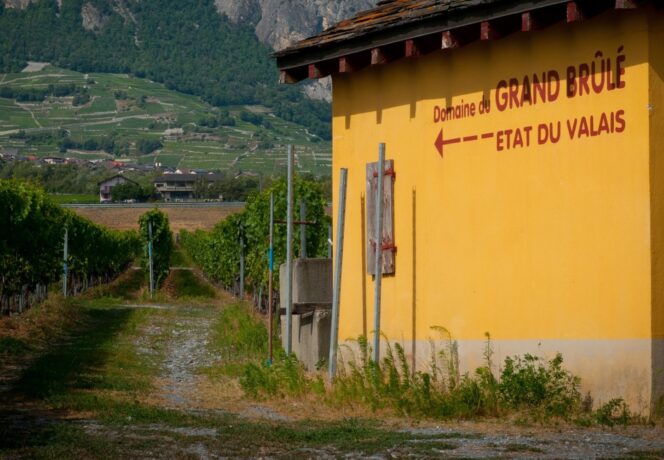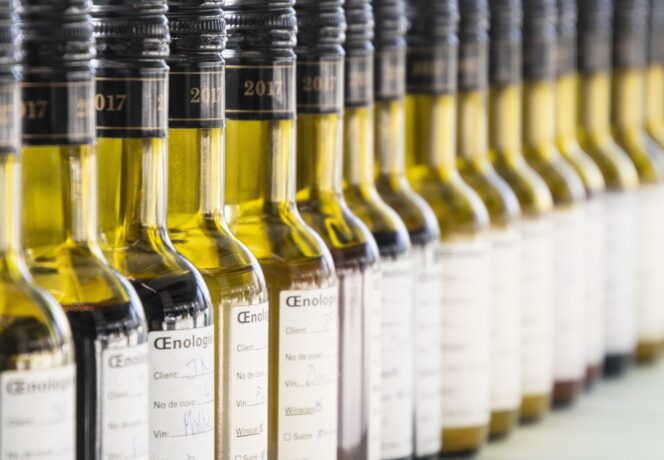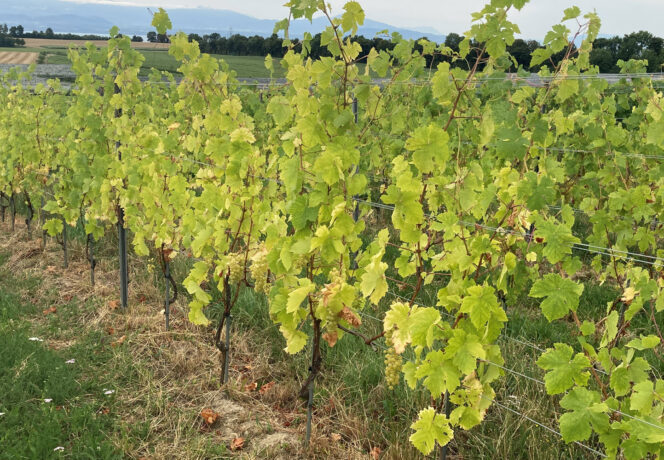Bioprospection of Metschnikowia pulcherrima for Chasselas vinification
Photos: Carole Parodi,
Agrocope (links),
Géraldine Zosso,
Agroscope (rechts)
With its positive contribution to aroma, Metschnikowia pulcherrimais emerging as a valuable yeast in winemaking. The trial conducted suggests that bioprospection is an effective strategy for leveraging local microbial biodiversity.
In 2021, a campaign for the isolation and genetic identification of microorganisms was conducted in four Swiss Cantons by taking samples from the vineyard and the cellars. Seven yeast genera were isolated, among which Metschnikowia pulcherrima (Mp) accounted for 24% of the total population (Figure 1). After isolation and the establishment of a biobank, these strains were tested during fermentation to assess their biochemical parameters and their ability to produce volatile compounds. The aim was to select a low-fermentation-strength yeast capable of producing an abundance of higher alcohols while generating only low amounts of undesirable compounds (acetic acid or acetaldehyde). The results showed a wide variability between the isolates. Ultimately, the Mp strain isolated in the Canton of Vaud (UASWS2926 VBI-A02) was retained for vinification testing of Chasselas must in the laboratory (2021) and afterwards in an experimental cellar (2022) owing to its outstanding production of 2-phenylethanol and its low levels of undesirable compounds. The aim was to discover whether this yeast could contribute to the creation of new aromas to enrich the aromatic profile of Chasselas wine.
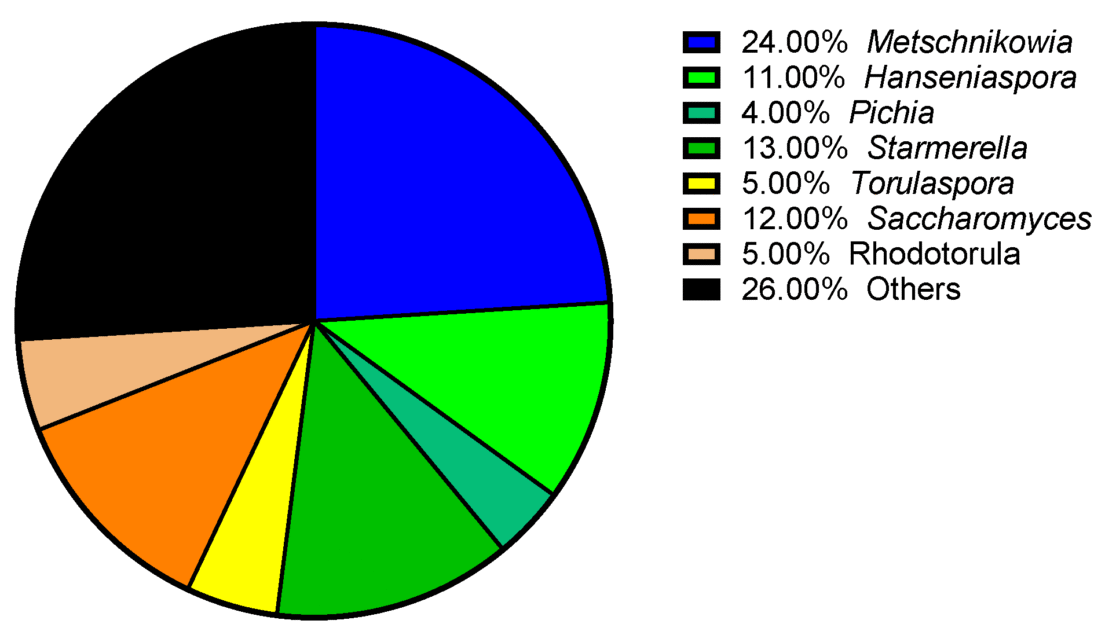
Wide microbial variability in the cellar
In the laboratory, two conditions were compared: a classic fermentation (CC) with a commercial Saccharomyces cerevisiae (Sc) strain, and a sequential fermentation (SF) in which Mp was inoculated five days before Sc. Microbiological monitoring of alcoholic fermentation (AF) was performed via flow cytometry (FCM) to measure cell concentration and activity using fluorescent markers. In addition, samples were taken to determine biochemical parameters via high-performance liquid chromatography (HPLC). A trial was then conducted in the cellar in which three conditions were tested: CC, SF and pied de cuve (PDC) using a starter prepared from grapes one week before the harvest. The results of the cellar trial (Figure 2) show that Mp exhibits low fermentation activity before the inoculation of Sc. Moreover, the results obtained via FCM indicate that Mp remains active, albeit in low amounts, until the addition of Sc, which corroborates the observations made in the laboratory.
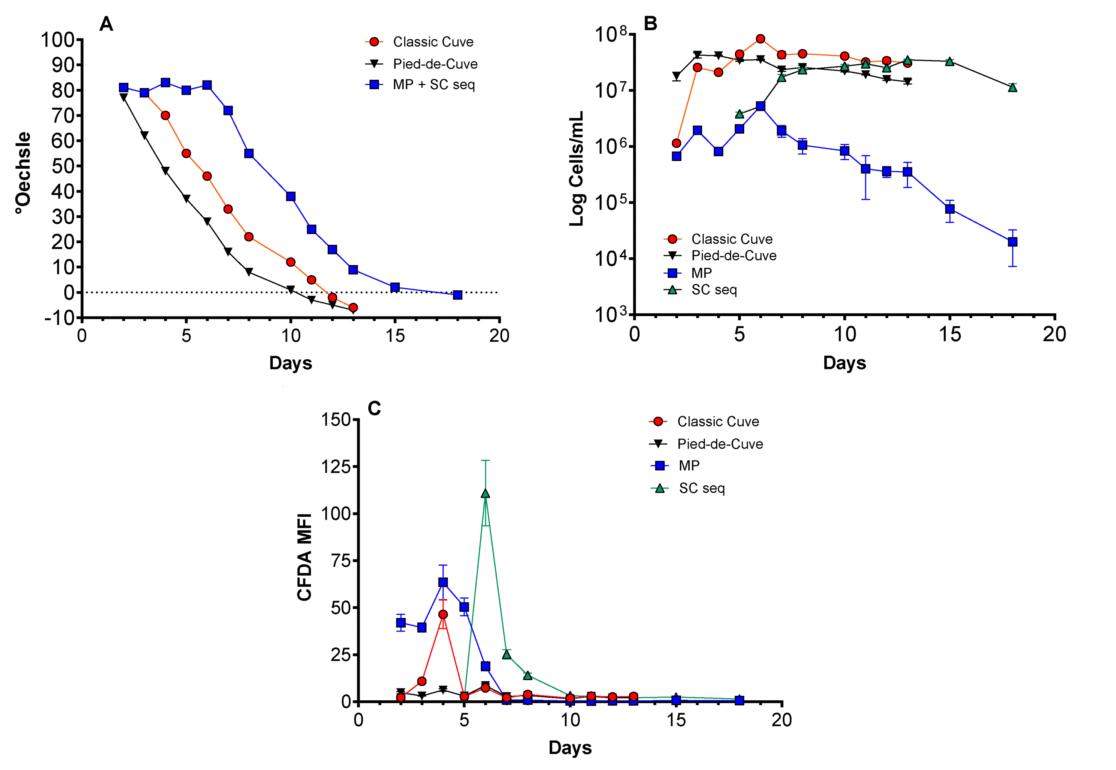
Samples were taken at different stages of AF (must in cellar, 1/3 into AF, 2/3 into AF, end of AF), to enable DNA extraction, amplification and sequencing with the aim of identifying the microbial communities present in the Chasselas must. The results highlighted a wide variability between the three conditions tested (Figure 3). It was observed that after inoculation of Mp into the must, the relative abundance of autochthonous yeasts such as Hanseniaspora uvarum and fungi such as Aureobasidium pullulans decreased with respect to the PDC condition. By contrast, H. uvarum and other yeasts persisted in the presence of Sc throughout AF in the PDC condition. The wines underwent malolactic fermentation, chemical stabilisation and filtration before being bottled to await tasting.telles que Hanseniaspora uvarum et des champignons tels qu’Aureobasidium pullulans a diminué par rapport au PDC. Dans ce dernier, en revanche, H. uvarum et d’autres levures ont persisté en présence de Sc tout au long de la FA. Les vins ont subi une fermentation malolactique, une stabilisation chimique et une filtration avant d’être mis en bouteille en attendant d’être dégustés.
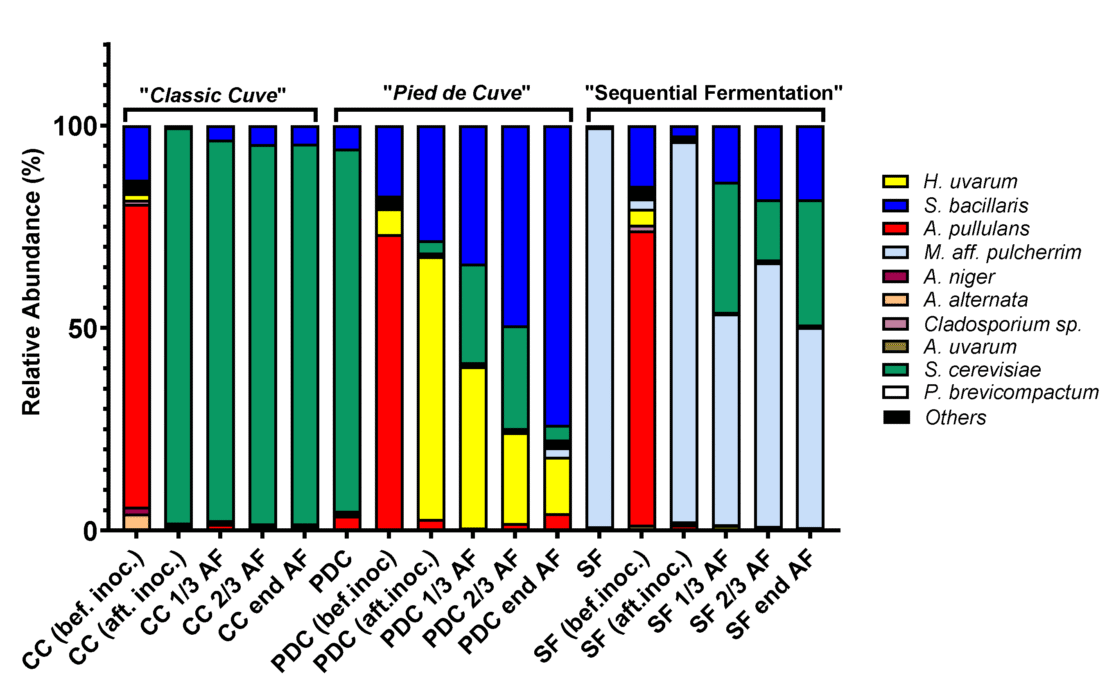
Mp contributes an aromatic note
Biochemical analysis of the wines revealed no major differences between the different conditions. Nevertheless, the sensory analysis revealed a slightly more floral character in the SF wine than in the PDC wine, although the difference was not statistically significant. By contrast, the SF wine exhibited a significantly stronger lactic character, and the wines from the CC and SF conditions were preferred to those of the PDC condition.
Conclusions
- The autochthonous strain of Metschnikowia pulcherrima isolated in the Canton of Vaud and used for sequential fermentation with Saccharomyces cerevisiae (Sc) does not ferment the sugars or interfere with the fermentation of Sc.
- Flow cytometry allowed us to precisely follow the cellular metabolic activity of species present over the course of alcoholic fermentation. Moreover, the results of the molecular biology sequencing in the cellar, performed at different stages of fermentation, revealed a significant microbial variability among the tested conditions.
- Our bioprospection strategy using Metschnikowia pulcherrima in sequential fermentation has enabled us to obtain Chasselas wines exhibiting more marked floral and lactic aromas.
Bibliographical reference
Bioprospection de Metschnikowia pulcherrima pour la vinification du chasselas.

